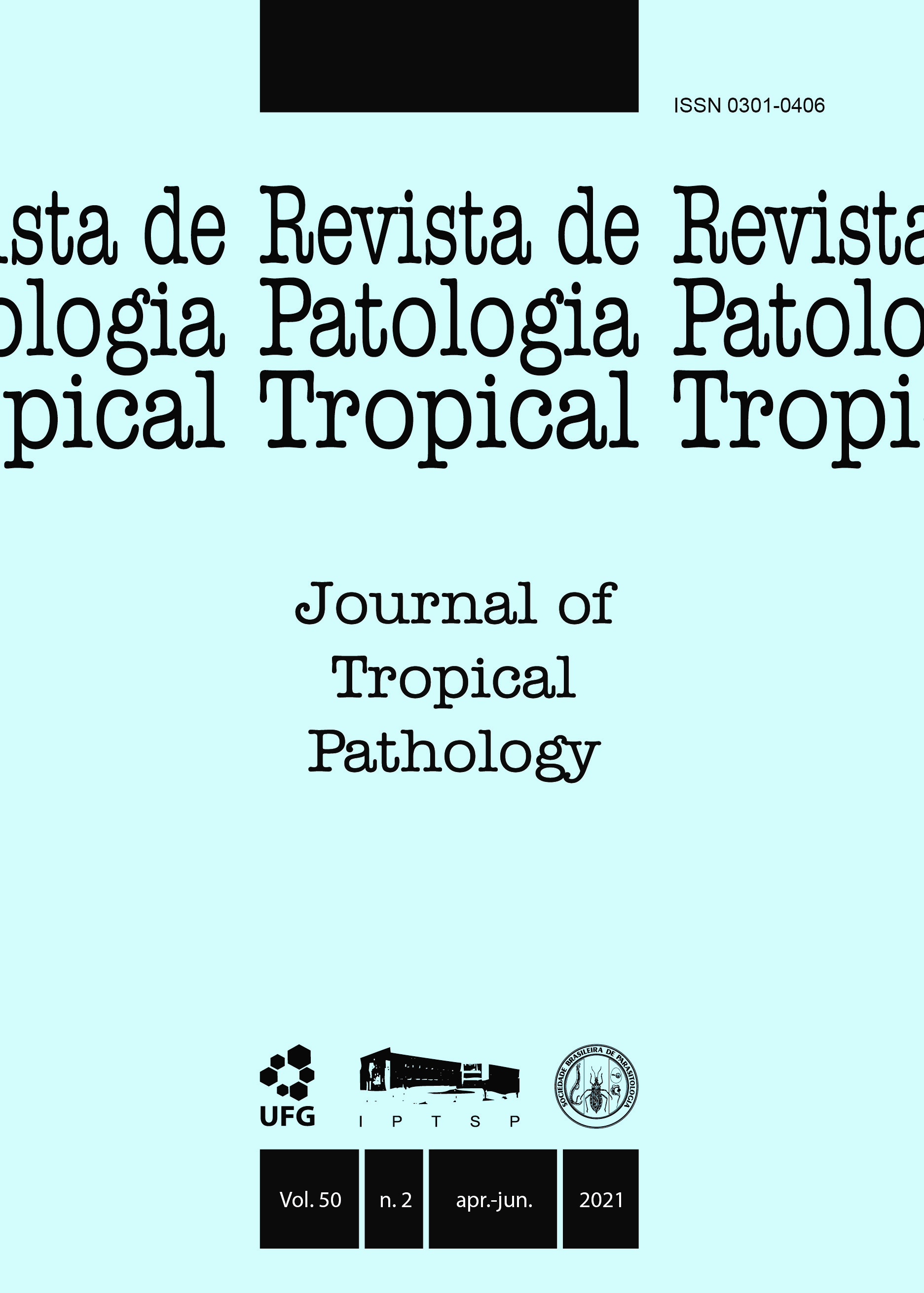High prevalence and intensity of fish nematodes with zoonotic potential in the Brazilian Amazon, including a brief reflection on the absence of human infections
DOI:
https://doi.org/10.5216/rpt.v50i2.67661Resumo
This study aimed to characterize the prevalence, mean abundance, and mean intensity of potential fish-borne zoonotic nematode larvae infecting the predator fish Hoplias aff. malabaricus from the Tapajós River, in the municipality of Santarém, in the Brazilian Amazon. After capture, the specimens of H. aff. malabaricus were analyzed for infection by Contracaecum sp. and Eustrongylides sp. third-stage larvae, and the prevalence, mean abundance, and mean intensity were calculated. A literature search was carried out to clarify the relationship between these indicators and eventual human cases of infection in the Amazon region. Third-stage larvae of nematodes of the Contracaecum and Eustrongylides genera were found in the specimens of H. aff. malabaricus sampled from the Tapajós River. The prevalence of Contracaecum larvae was 100%, while its mean abundance and mean intensity were both 54.8 larvae/fish. The prevalence of Eustrongylides larvae was 62.9%, and its mean abundance and mean intensity were 1.8 and 2.8 larvae/fish, respectively. Despite the high prevalence and intensity values, there are no cases of human infection by these nematode larvae in the Brazilian Amazon reported. The absence of human infections by these nematode larvae in the Brazilian Amazon despite the high prevalence/intensity of Contracaecum and Eustrongylides larvae and the high consumption of fish in the region, is most probably due to the fact that the local populations do not eat raw or undercooked fish. However, it is noteworthy that the absence of zoonotic cases in the region is based only on the examination of the available published papers. A better knowledge of the situation would require surveying hospitals and clinics, and data from the region’s medical treatment facilities. However, the authors consider that cases of human infection, if any, are extremely rare, mainly due to the eating habits of the local population.
KEY WORDS: Amazon basin; freshwater fish; public health; parasitic infection; zoonosis.
Downloads
Downloads
Publicado
Como Citar
Edição
Seção
Licença
The manuscript submission must be accompanied by a letter signed by all authors stating their full name and email address, confirming that the manuscript or part of it has not been published or is under consideration for publication elsewhere, and agreeing to transfer copyright in all media and formats for Journal of Tropical Pathology.

